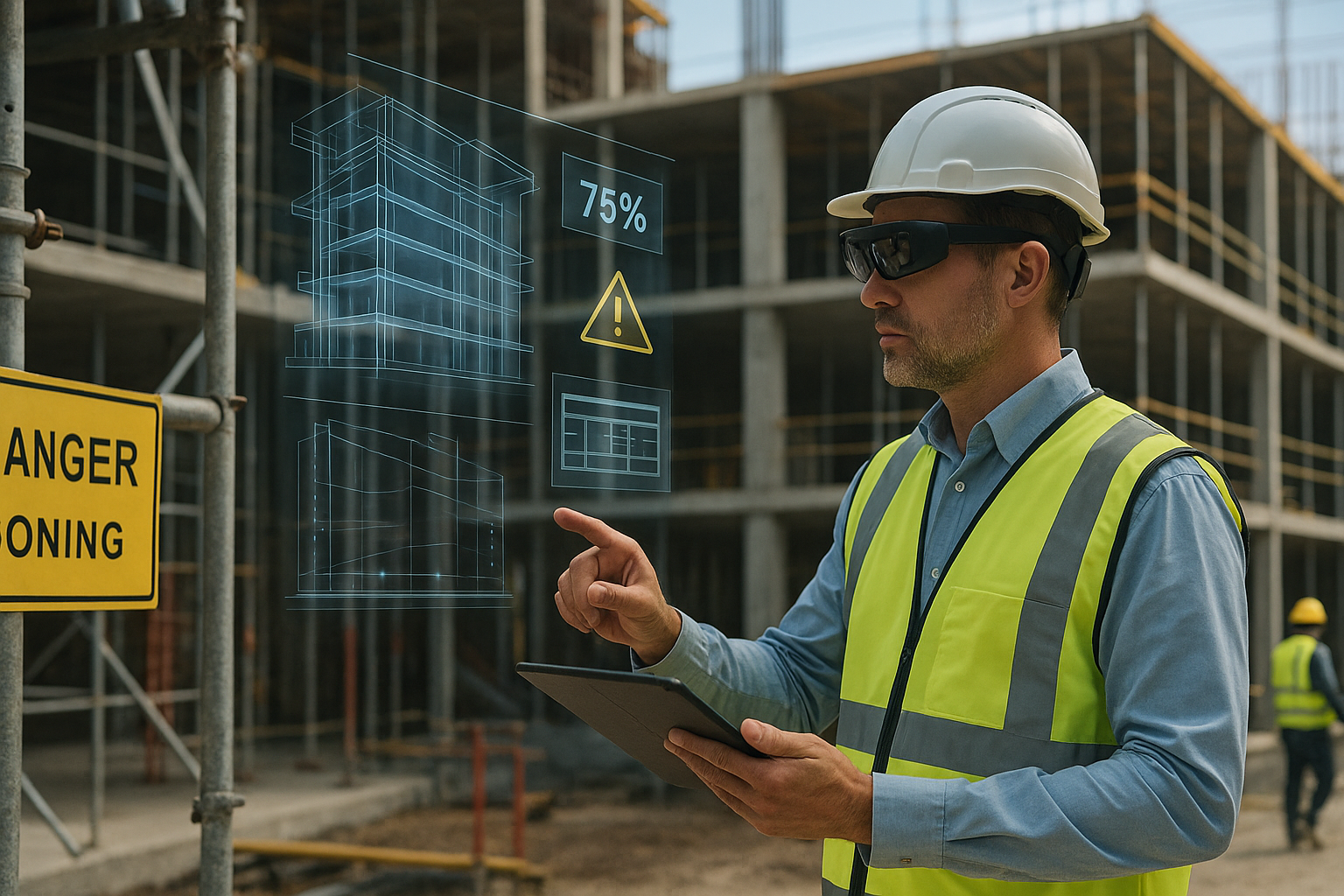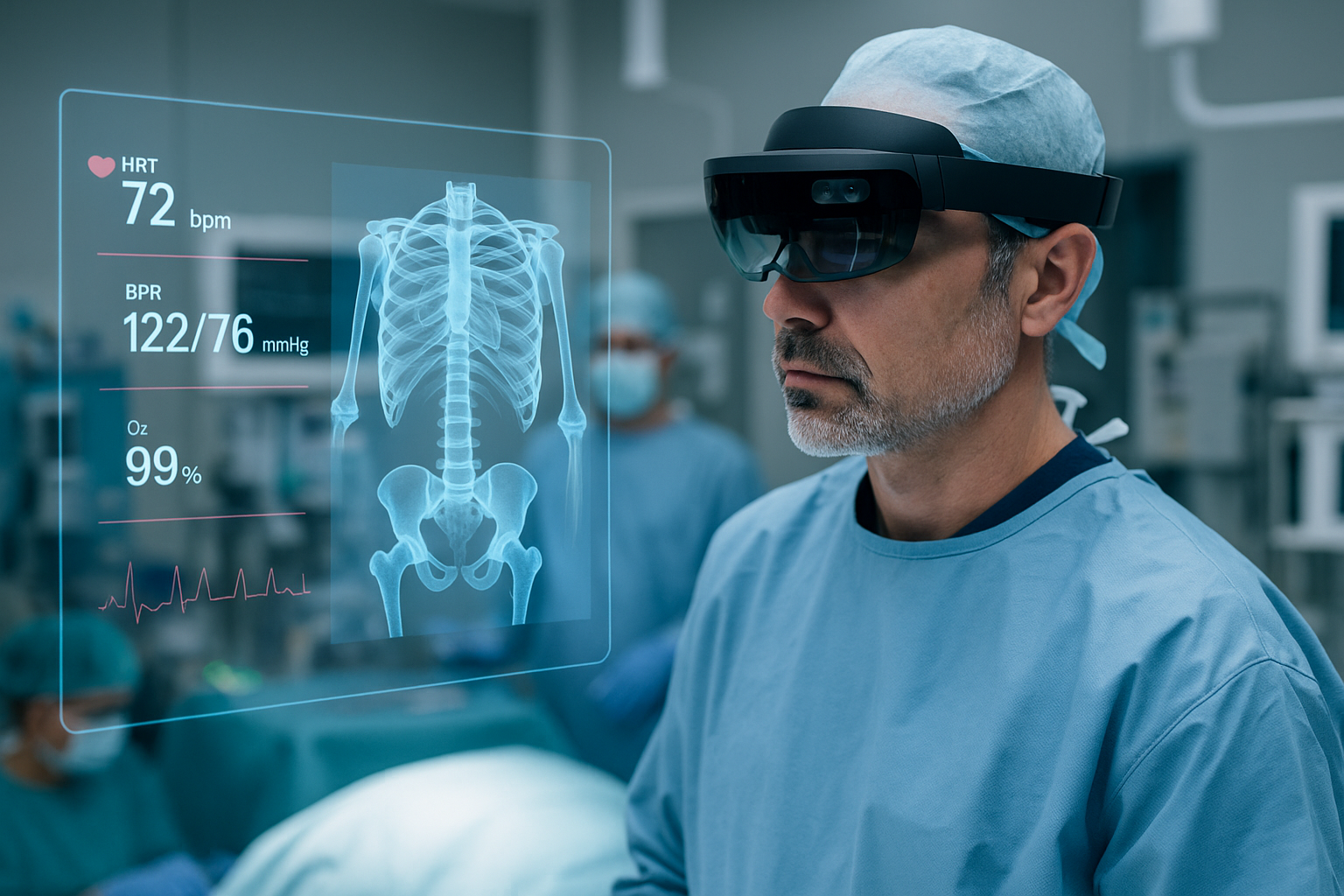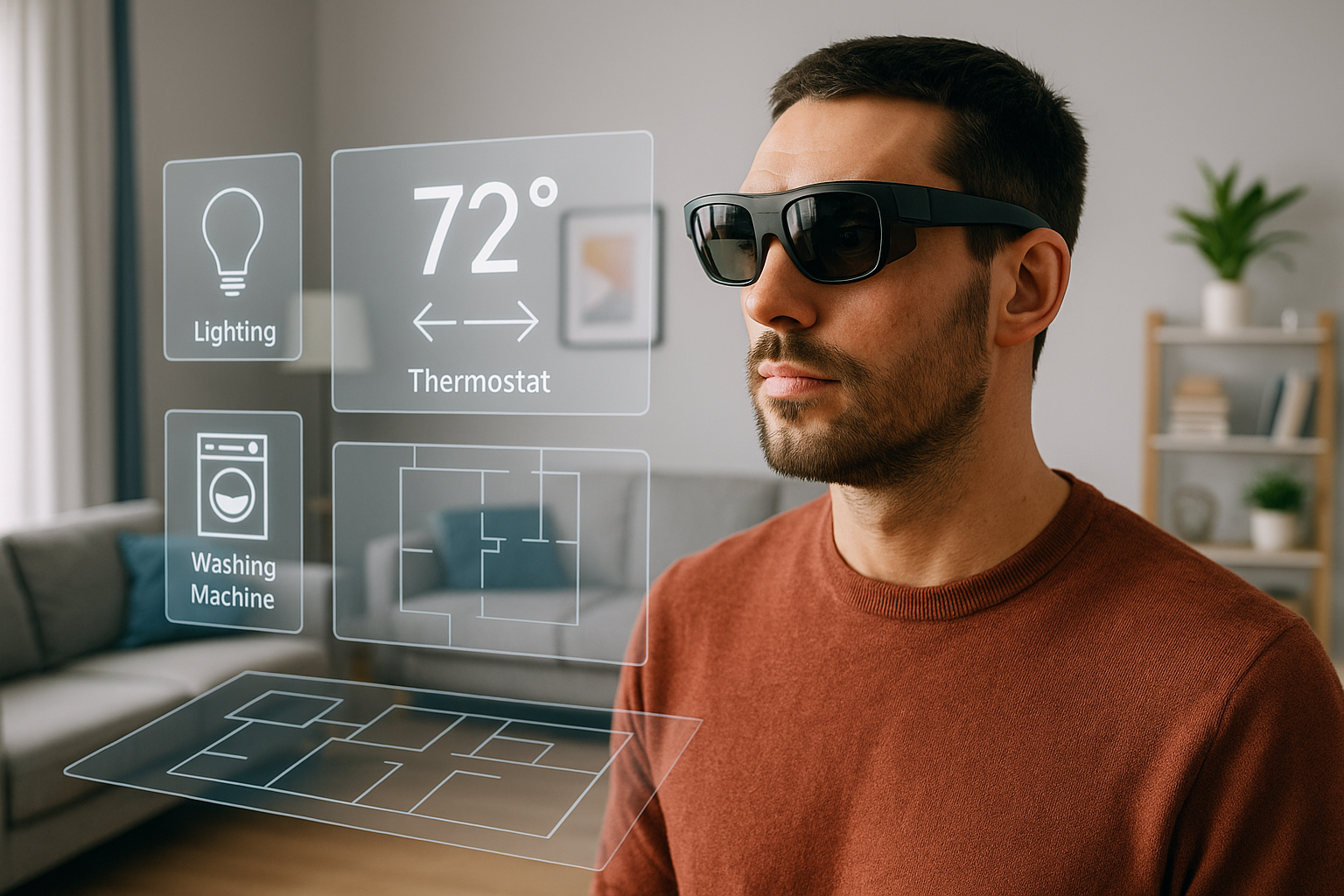What’s new in AR this month? In August 2025, construction firms are increasingly integrating AR to solve long-standing jobsite issues—from miscommunication and design errors to safety violations. Several large-scale contractors in Europe and Asia have launched pilot programs combining AR wearables and AI-powered monitoring tools, leading to improved compliance and a measurable reduction in site incidents.
As AR becomes more embedded in field operations, the construction industry is entering a new phase of digitization. Real-time overlays, automated inspections, and AI-enhanced site analytics are helping reduce cost overruns and protect workers—making AR not just a tech upgrade, but a necessity in modern construction workflows.
Why AR Is a Game-Changer for Construction Monitoring
Traditionally, site supervisors relied on paper blueprints, manual inspections, and verbal updates. This approach was error-prone, time-consuming, and often reactive. AR revolutionizes this process by offering:
- Real-time visual data of progress, hazards, and compliance issues
- Spatial alignment of 3D BIM models onto physical spaces
- Hands-free instruction via AR glasses or headsets
These capabilities allow decision-makers to detect errors before they escalate, ensure adherence to safety protocols, and improve worker training—all without leaving the jobsite.
Use Case: Remote Site Supervision with AR
In a major infrastructure project in Osaka, site engineers using AR glasses could monitor concrete curing conditions, temperature differentials, and material placement through a real-time overlay. Supervisors based offsite could view the same data via a synchronized AR feed, providing approvals or flagging concerns instantly. This reduced on-site delays by 40% and saved 12% in labor costs.
Top Benefits of AR in Construction Site Monitoring
1. Real-Time Progress Tracking
AR apps can overlay construction milestones on actual structures, giving supervisors visual insight into whether framing, MEP installation, or exterior cladding is on schedule. This improves stakeholder communication and milestone tracking.
2. Enhanced Safety Enforcement
Workers can use AR gear that visualizes hazard zones, unsafe machinery operation areas, or PPE compliance issues in real time. AI-powered AR systems can even detect violations and alert supervisors automatically.
3. Streamlined Issue Detection
AR makes it possible to identify clashes, deviations from the 3D model, or incomplete tasks instantly. Instead of scanning reports or walking the site, supervisors can “see” unresolved issues directly on their AR display.
4. AI-Integrated Inspections
By integrating AR with AI tools, inspections become semi-automated. Systems can scan reinforcement placement or structural integrity against pre-trained models and highlight potential defects before concrete is poured.
Technical Foundations: BIM + AR
The integration of Building Information Modeling (BIM) with AR is the backbone of advanced site monitoring. Here’s how it works:
- Pre-construction: Engineers upload BIM models into an AR platform like Trimble SiteVision or DAQRI Worksense.
- On-site execution: Workers use AR glasses to visualize models overlaid on the physical site, ensuring layout precision.
- Deviation detection: Sensors and AI highlight areas where real-world progress differs from the model.
Quantifiable Impact
- Contractors using AR for monitoring reported a 35% decrease in rework due to early error detection.
- Jobsite accidents fell by 28% in AR-equipped zones due to proactive safety alerts and guided hazard navigation.
- Inspection time was reduced by 45% through the use of semi-automated AI + AR field assessments.
Case Study: Commercial Tower Project, Frankfurt
A German firm adopted AR for structural inspection and quality control. Supervisors used AR tablets to walk through floor-by-floor BIM comparisons. Defects were flagged via voice command and logged automatically with time, GPS, and severity data. The result: snag resolution accelerated by 60%, and handover was completed 3 weeks ahead of schedule.
Challenges and Solutions
- Challenge: AR hardware is still bulky and expensive.
Solution: Lightweight headsets (like Hololens 3 and Magic Leap 3) are becoming more affordable through leasing programs. - Challenge: On-site connectivity is unreliable.
Solution: 5G and local edge computing allow AR apps to function even in poor coverage zones. - Challenge: Worker training for AR devices takes time.
Solution: Most systems now offer gesture-based UIs and onboarding simulations built in AR itself.
Best Practices for Implementation
- Start with high-risk zones like crane lifts, scaffold inspections, or deep excavation monitoring.
- Use AI-trained AR systems to detect PPE compliance, fall hazards, or workflow bottlenecks.
- Integrate AR reports directly into project management tools like Procore or Autodesk BIM 360.
- Establish a feedback loop—use AR-collected site data to refine future model assumptions and risk calculations.
What’s Next in 2025–2026?
- AR + Drones: UAVs with AR overlays will allow supervisors to inspect hard-to-reach areas in real time.
- Multi-party AR feeds: Multiple teams (engineers, city inspectors, insurers) will collaborate in the same AR workspace.
- Generative AI: Based on AR-collected data, AI tools will begin to suggest improvements in sequence optimization, worker assignment, or materials delivery scheduling.
Further Reading
- Autodesk Construction Monitoring Solutions
- Trimble AR for Construction
- AR/VR Trends in Construction – Construction Dive
Key Takeaways
- AR in construction site monitoring helps reduce risk, boost accuracy, and accelerate timelines.
- Combining AR with AI and BIM offers predictive, proactive, and data-rich project oversight.
- The next generation of jobsites will be fully augmented—with real-time insights flowing from boots on the ground to boardroom dashboards.




